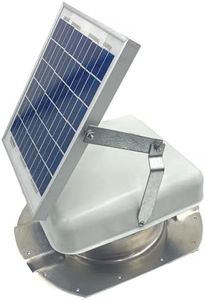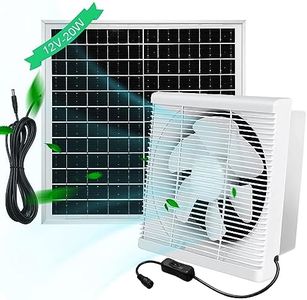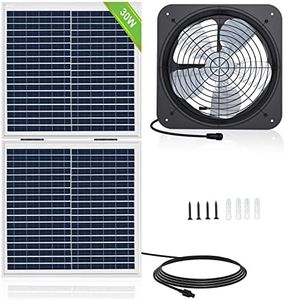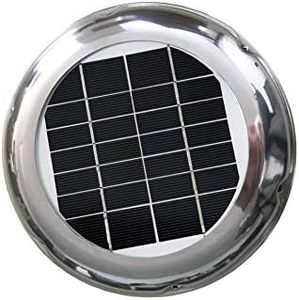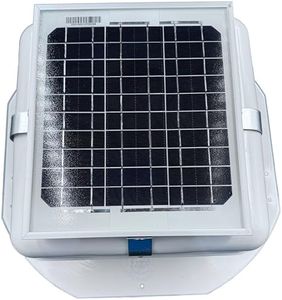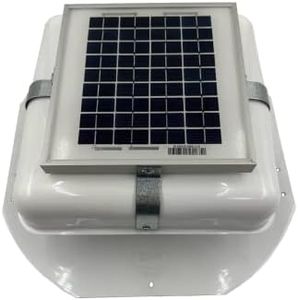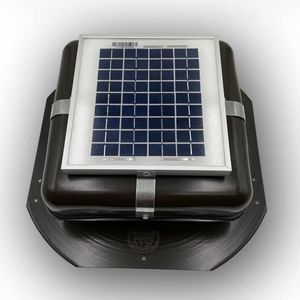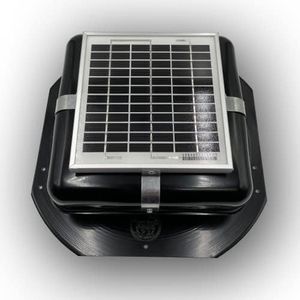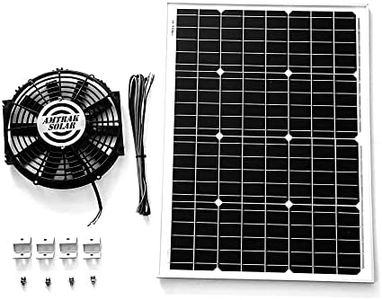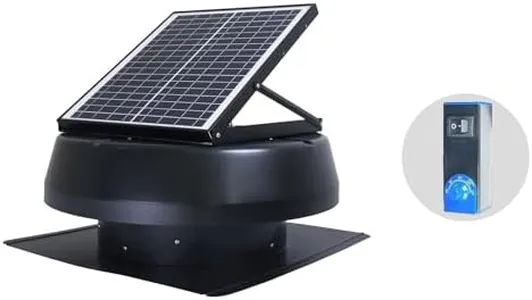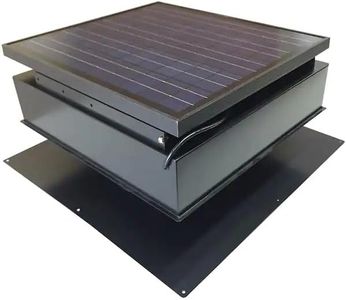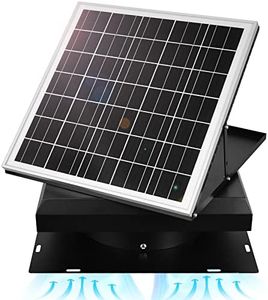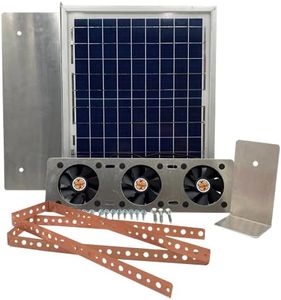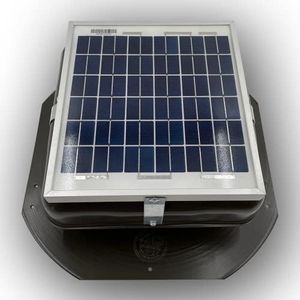We Use CookiesWe use cookies to enhance the security, performance,
functionality and for analytical and promotional activities. By continuing to browse this site you
are agreeing to our privacy policy
10 Best Solar Roof Vent Fans
From leading brands and best sellers available on the web.Buying Guide for the Best Solar Roof Vent Fans
Choosing the right solar roof vent fan can improve your indoor air quality, help control moisture, and keep your attic or roof space cooler. To select the best one for your needs, you'll want to balance your home's size, climate, installation requirements, and energy needs. Understanding the key specifications means you can match a fan to your situation for optimal performance and comfort.Airflow Capacity (CFM)Airflow capacity, typically measured in Cubic Feet per Minute (CFM), indicates how much air the vent fan can move. Higher CFM means the fan can ventilate larger spaces or do so more efficiently. For smaller attics or sheds, a lower CFM (around 400-600) can be sufficient, while larger attics or high-heat climates may require higher capacities (800-1600 or more). When choosing, match the airflow to your attic's size and the amount of heat or moisture you need to manage. Oversizing isn't always better, as it may draw conditioned air from inside the house, while undersizing won't cool effectively.
Solar Panel WattageThe wattage of the solar panel determines how much power it can provide to the fan. Lower wattages (10-15W) are usually enough for small vent fans in mild climates, while larger, more powerful fans may require panels of 20W, 30W, or even higher. A higher wattage panel ensures the fan runs at full speed even on cloudy days or if your attic gets very hot. When selecting, consider your area's sunlight availability and whether you need reliable performance year-round.
Thermostat and Humidistat ControlsSome solar roof vent fans include built-in thermostats and/or humidistats that automatically turn the fan on or off based on attic temperature or humidity. This feature adds convenience and ensures the fan works only when needed, saving energy and extending lifespan. If you want to set-and-forget or have specific temperature/humidity concerns, a fan with adjustable controls is a good fit; otherwise, a simpler always-on operation may suit passive air exchanging needs.
Installation TypeSolar roof vent fans can be designed for different types of roofs (e.g., shingle, tile, metal) and may have varying installation requirements, such as whether they are mounted flush, have a curb base, or require additional flashing. Before choosing, check your roof type and ease of access, and decide whether you can install it yourself or need professional help. Simpler installations are preferable for most homeowners, while complex setups can allow for larger or more discreet units.
Noise LevelThe quietness of operation is important, especially if the vent fan will be near living spaces or bedrooms. Some units are engineered to be very quiet, while others may be more noticeable. Noise is usually measured in decibels (dB), where lower is quieter. If noise sensitivity is an issue, opt for a fan advertised as 'quiet' or check manufacturer specs for dB ratings, selecting the lowest practical for your location.
Durability and Weather ResistanceSolar roof vent fans are exposed to the elements, so materials and construction quality matter. Look for features like UV-resistant plastics, rust-resistant metal (such as stainless steel or powder-coated aluminum), and watertight designs. In harsh climates, prioritizing durability ensures a longer lifespan and fewer leaks or breakdowns. If your area has storms, heavy rain, or intense sun, choose models with confirmed long-term performance under those conditions.
Backup Power or Hybrid OperationSome solar vent fans offer the option to connect to house power or include a backup battery, letting the fan run even when the sun isn't shining. This feature ensures ventilation continues on cloudy days or at night, which is useful in climates with varied weather. If continuous ventilation is important, especially for year-round moisture control, consider fans with a backup feature; otherwise, solar-only models suffice in sunny regions during peak heat.
